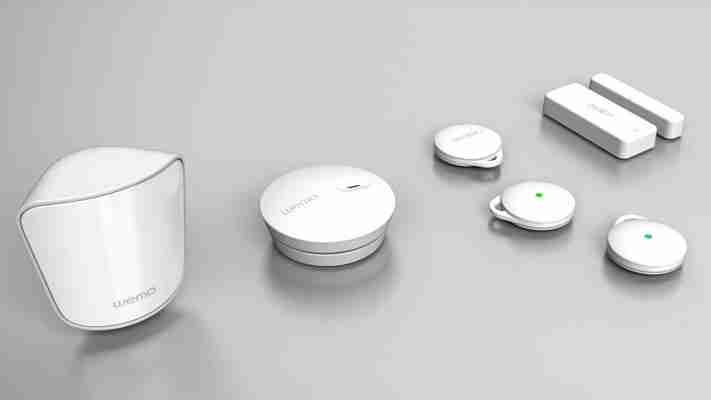In a bid to keep costs and the final retail price as low as possible, Chromebooks are usually lacking in one of a few key areas: display, power or industrial design. Acer hopes to nail all three with the Chromebook 13 , the first Chrome OS laptop with an Nvidia Tegra K1 processor.

The hope is that this particular chipset will be both powerful and power-efficient; Acer is promising up to 13 hours on a single charge, which should keep you running for most of the day. To hit this particular milestone, you’ll need to opt for the cheaper ($279) 1,366 x 767 resolution model though – the more expensive ($299) 1080p variant maxes out at the 11 hour mark.
A few manufacturers, including Samsung , Toshiba and HP have tried to improve the look and feel of Chromebooks, with varying results. The Acer Chromebook 13 is hardly an improvement, sporting a greyish-white plastic chassis, a large trackpad and a black, full-size keyboard. It’s not particularly stylish or memorable, but it doesn’t stand out like a sore thumb either.
At 18mm thin and 3.31 pounds, it’s also reasonably portable for anyone who likes to keep a laptop stowed in their rucksack. The Acer Chromebook 13 is fitted with two USB 3.0 ports and an HDMI port too, which – aside from an absent SD card slot – should cover the basics from a productivity standpoint.
The biggest test will come in the power department. Chrome OS isn’t particularly labor intensive, but many Chromebooks have fallen short because of sub-par components under the hood. The Tegra K1 processor – a first for Chromebooks – is supposed to fix that though, with better performance for multi-tasking and intensive Chrome apps and services, such as Google Hangouts.
The 13-inch laptop will be sold from $279; an extra $20 will reward you with the sharper 1080p display. A firm release date hasn’t been given yet, but we’ll update this page once it’s been confirmed.
Hands-on with Xiaomi’s $13 fitness band: A beautifully simple tracker that also unlocks your phone
Xiaomi jumped into the wearables fray today after it took the wraps off the Mi Band , a fitness band for only CNY79 ($13). At first glance, the price is obviously the clincher — the Fitbit, for example, costs US$99.95.

The Mi Band, however, is much more than a “cheap device” — it does an array of useful things that are really impressive. Other than tracking various fitness metrics, including the number of steps you take and your sleep cycle, it also acts as an alarm clock and best of all — can even unlock your Xiaomi smartphone.
First impressions: the Mi Band is a lightweight, curved device that looks a bit cheap given its neon colors — but that should appeal to people who like the fun, casual vibe it gives off. For those who don’t like this particular design, Xiaomi will also be releasing other variations including a leather band for something that looks more high-end.
At first glance, the Mi Band looks like it can’t really do anything — it just features a thumb-sized sensor plugged into a band. This means it can’t display any metrics while you are exercising, and in that sense, could lose a bit of appeal for those looking for more out of a standalone fitness band.
However, it is perfect for those looking for a budget wearable device to just track their steps or activity, since it costs a mere $13 and fulfils the exact aims it’s built for — though how accurately it does so remains to be seen, as the Mi Band doesn’t have a specific release date yet.
The fitness band tracks a variety of metrics and syncs to the “Mi Band” Android app developed by Xiaomi — including the amount of calories you have burned according to the activity you have done, how long you have slept for, and even a graph that dissects the different stages of your sleep.
The Mi Band sits extremely well on my wrist, and I can imagine bringing it everywhere with me since it is also water-resistant, certified with an IP67 standard . This also makes it very useful for those with a Xiaomi smartphone, as simply waving it in front of the Mi 4 managed to successfully unlock it without having to key in your password each and every time.
Although the Mi Band seems a tad simplistic to compete on an equal ground with its competitors’ fitness bands that boast heart rate sensors and display screens among other features, Xiaomi CEO Lei Jun laid out a plan for it to act more like a personal ID than anything else — that is, he hopes that it can eventually be a device to unlock your door when you come home, or switch on smart appliances and gadgets, for example.
The day when that happens is when the Mi Band will take on a lot more usefulness than what it currently boasts — but honestly for such a price, there really isn’t much to complain about.
Don’t miss – Know your Fitbit from your Fitbug: A guide to the best activity-trackers on the market
Headline image via Xiaomi
Belkin announces new WeMo sensors for a more connected home
The Belkin WeMo sensor line just got a little bit larger with magnets, door and room sensors and a keychain.

The four new sensors are part of Belkin’s already large line of Internet of Things devices that give you control over plugged in items, lights, crock pot and camera. The new devices lean towards the security side of things, which makes sense as more and more of the security companies out there are offering up their own connected home solutions.
Where Belkin shines is that it doesn’t charge a subscription fee for any of its devices unlike security company solutions. It’s all plug and play and connects directly to your smartphone.
The new door and window sensor uses magnets to alert you when a door opens. Nothing new here, but if you’re already using WeMo devices in your house, it’ll work with all those devices so it’s a nice addition.
The Keychain Sensor acts as a digital tracking device. It alerts you when a person comes or goes, and might prove helpful for parents who want to keep an eye on their kids. It can also be used as a trigger: if you leave the house with it, it can turn off all your other WeMo-connected devices.
The WeMo Alarm Sensor monitors your current fire and carbon monoxide alarms. If those alarms aren’t already Internet of Things devices, this is an add-on that will alert you when you away from home that something is amiss.
Finally, the WeMo Room Motion Sensor does exactly what you expect it to do. One nice feature is that Belkin says it only notices human movements, and ignores pets scampering about. It has a 30 foot range, 90 degree field of view and acts as a trigger for other devices.
Even If you don’t have any other WeMo devices but you’re a connected home fan, WeMo works with IFTTT so these items should work drop right into your connected home, no problem.
Belkin says the devices will be available during the second half of 2015. No pricing has been announced.
